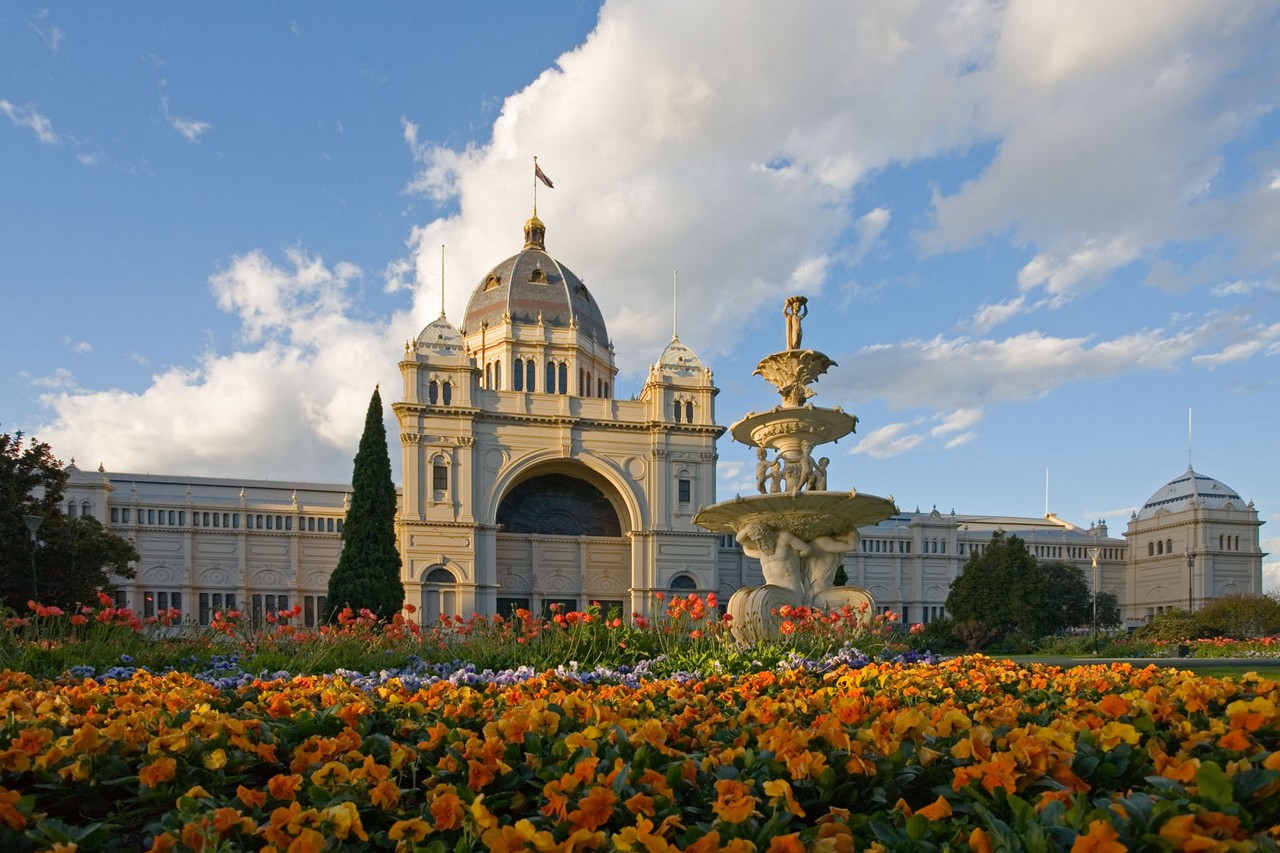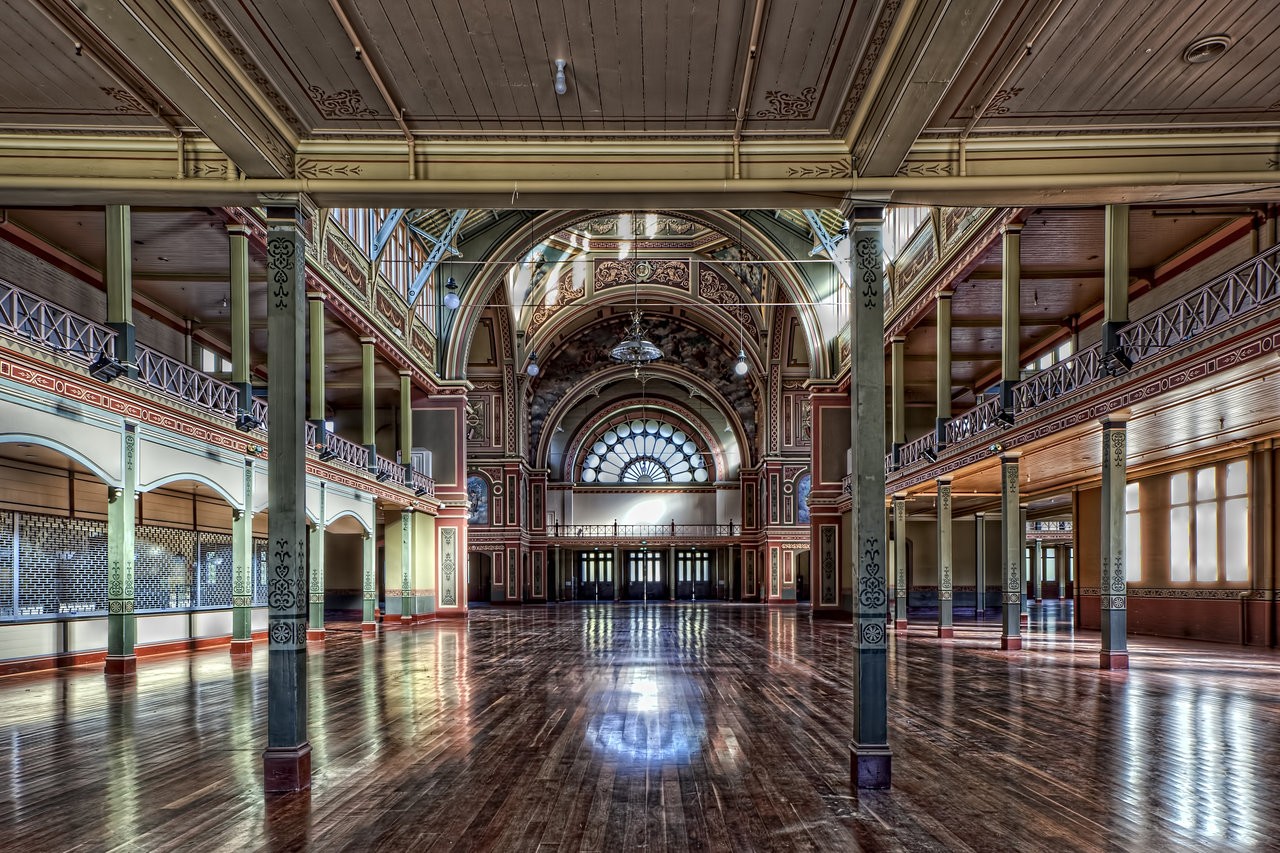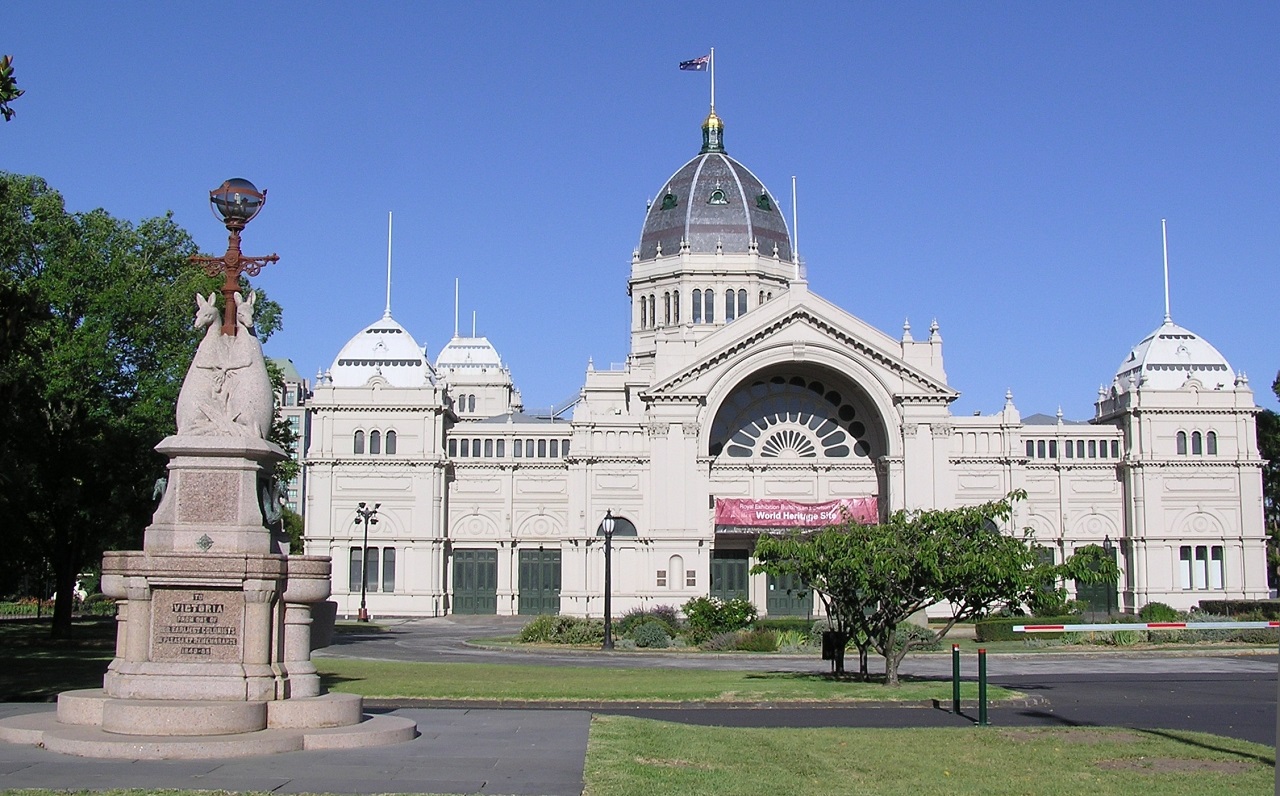The Royal Exhibition Building is a World Heritage Site-listed building in Melbourne, Australia, completed in 1880. It is located at 9 Nicholson Street in the Carlton Gardens, flanked by Victoria, Nicholson, Carlton and Rathdowne Streets, at the north-eastern edge of the central business district. It was built to host the Melbourne International Exhibition in 1880–81 and later hosted (in the Western annex) the opening of the first Parliament of Australia in 1901. Throughout the 20th century smaller sections and wings of the building were subject to demolition and fire; however, the main building, known as the Great Hall, survived.
It received restoration throughout the 1990s and in 2004 became the first building in Australia to be awarded UNESCO World Heritage status, being one of the last remaining major 19th-century exhibition buildings in the world. It is the world's most complete surviving site from the International Exhibition movement 1851–1914. It sits adjacent to the Melbourne Museum and is the largest item in Museum Victoria's collection. Today, the building hosts various exhibitions and other events and is closely tied with events at the Melbourne Museum.
History
The Royal Exhibition Building was designed by the architect Joseph Reed, who also designed the Melbourne Town Hall and the State Library of Victoria. According to Reed, the eclectic design was inspired by many sources. The dome was modeled on the Florence Cathedral, while the main pavilions were influenced by the style of Rundbogenstil and several buildings from Normandy, Caen and Paris.
It was built by David Mitchell, who also built Scots' Church and St Patrick's Cathedral. He was also the father of the famed soprano Dame Nellie Melba, who sang at the opening of the Provisional Parliament House in Canberra in 1927.
The foundation stone was laid by Victorian governor George Bowen on 19 February 1879 and it was completed in 1880, ready for the Melbourne International Exhibition. The building consisted of a Great Hall of over 12,000 square metres and many temporary annexes.
1980s–present
On 13 August 1980, Norman Lacy, Minister for the Arts in the Hamer government, unveiled the plaque (located at the eastern entrance) that commemorates the centenary of the opening to the general public of the Exhibition Building on 29 May 1880.
During a visit to Victoria in 1984, Princess Alexandra bestowed the royal title on the building and it has been referred to as the Royal Exhibition Building ever since. This title, and the first conservation assessment of the building undertaken by Alan Willingham, sparked a restoration of the interiors of the building in the late 1980s and 1990s, and the construction of a mirror glass annexe (which was later demolished). In 1996, the then Premier of Victoria, Jeff Kennett, proposed the location and construction of Melbourne's State Museum on the adjacent site. Temporary annexes built in the 1960s were removed and in 1997 and 1998, the exterior of the building was progressively restored.
The location of the Melbourne Museum close to the Exhibition Building site was strongly opposed by the Victorian State Labor Party, the Melbourne City Council and some in the local community. Due to the community campaign opposing the museum development, John Brumby, then State opposition leader, with the support of the Melbourne City Council, proposed the nomination of the Royal Exhibition Building for world heritage listing. The world heritage nomination did not progress until the election of the Victorian State Labor Party as the new government in 1999.
On 1 July 2004, the Royal Exhibition Building and Carlton Gardens was granted listing as a World Heritage Site, the first building in Australia to be granted this status. The heritage listing states that "The Royal Exhibition Building is the only major extant nineteenth-century exhibition building in Australia. It is one of the few major nineteenth-century exhibition buildings to survive worldwide."
In October 2009, Museum Victoria embarked upon a major project to restore the former German Garden of the Western Forecourt. The area had been covered by asphalt in the 1950s for car parking.












